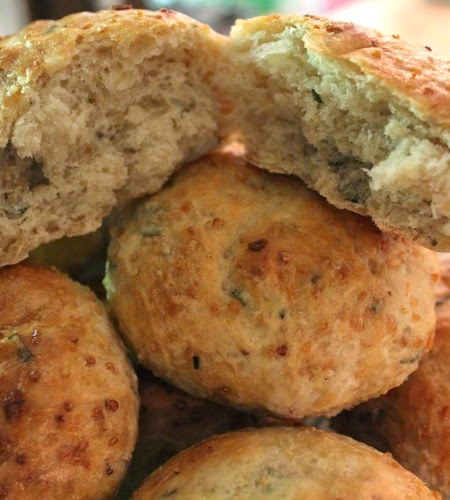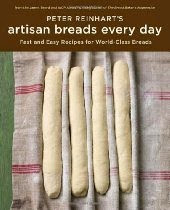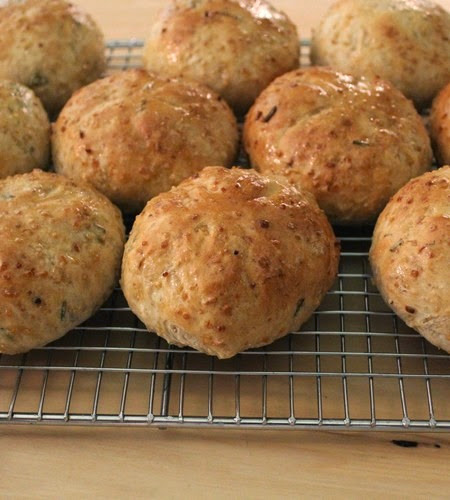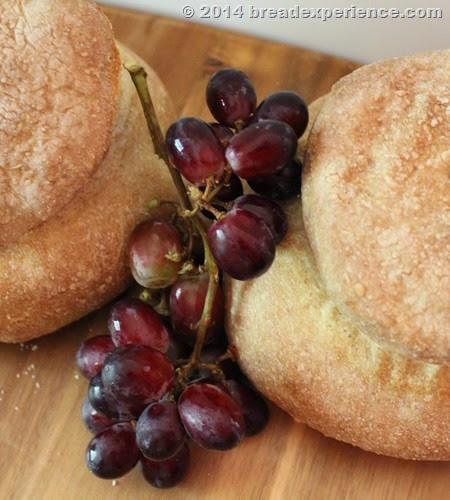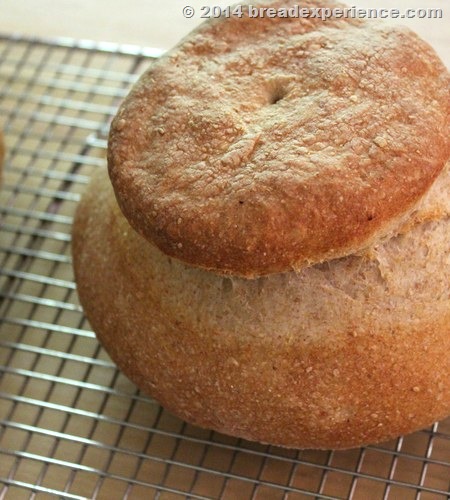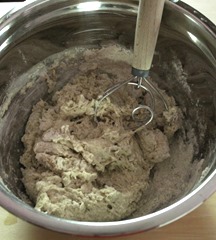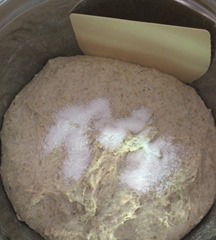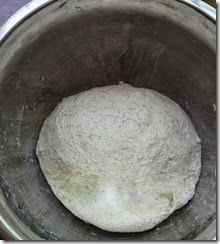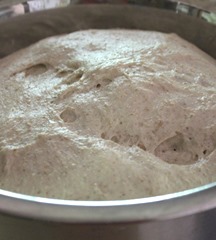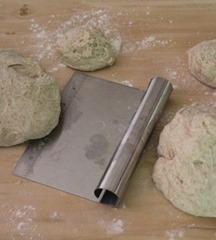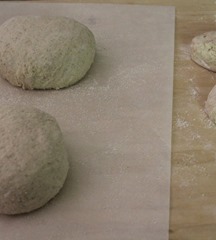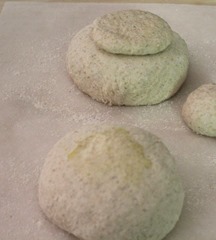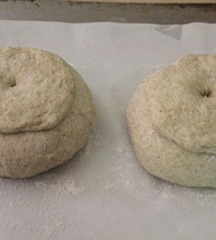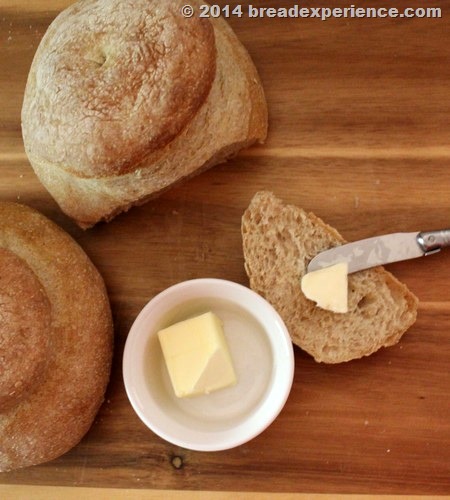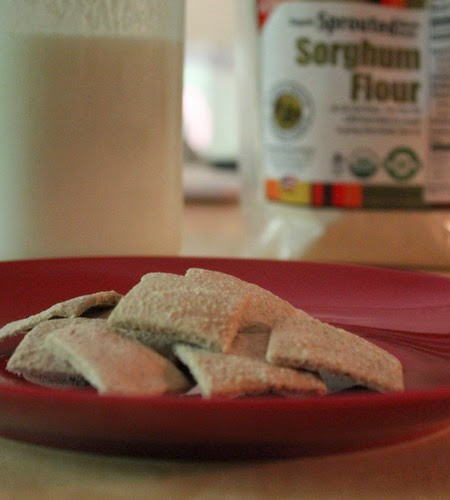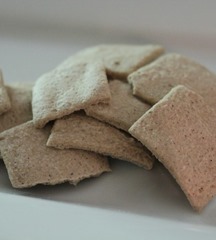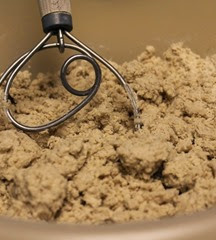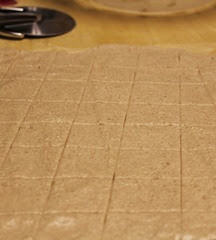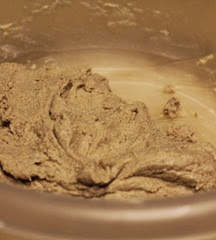It’s that time again! Time to reveal the monthly bread for the Bread Baking Babes (BBBs). The host for this month’s bake is Karen of Bake My Day and she chose the Wild Rice and Onion Bread from Peter Reinhart’s book Artisan Bread Every Day.
Instead of following the recipe as presented, I took a different approach. I went to the back of the book, got the baker’s percentages, and worked from there.
I have several of Peter Reinhart’s books, including this one, and I really enjoy making breads from them. One of the things I like about this book is that he includes baker’s percentages for every recipe so you can easily customize all of the breads.
Of course, you can make every bread in the book without using baker’s percentages, but the percentages come in handy when you want to adjust the ingredients up or down or add in additional components. You can do this without a formula, but the percentages are really easy once you get the hang of it. I fought this concept, you know the whole math thing, but now that I’ve jumped in, the water is fine.
Using the BreadStorm™ iPad app helped get me over the learning curve with baker’s math. You just plug the percentages (or weight by grams or kilograms) into the tool and voila! It calculates the other percentages for you. I just love apps, but at some point, you really do need to know how to do it by hand.
All you do is decide how much flour you want to use and that becomes the 100%. All the other percentages are based off of the flour %. I wanted to make rolls so I reduced the amount of flour to 500 grams. The original recipe uses 765 grams of flour which is enough to make two loaves of bread. I didn’t want that many rolls. My adjustments made 12 rolls and that was plenty. I was able to enjoy some now and freeze some for later.
I didn’t have any wild rice so I used quinoa. I added in some rosemary because I thought the flavor would go well with the quinoa and dried onions. Well, really it’s because I just got a new rosemary plant, and I don’t want it to go to waste.
You can also use brown rice in this recipe, but the quinoa gives it a unique texture. I used kefir milk, but feel free to use any kind of milk in this bread. I’ve been maintaining some kefir grains so I need to continue to find creative ways to use the milk. The kefir worked really well in this recipe.
Quinoa, Onion & Rosemary Rolls
Adapted from: Artisan Bread Every Day by Peter Reinhart
Yield: 12-18 Rolls (depending on how big you shape them)
Original Formula (percentages):
- 100% unbleached bread flour
- 2% salt
- 2.4% yeast
- 7.4% brown sugar
- 44.5% water
- 15% Buttermilk or any other milk
- 3.7% dried minces or chopped onions or
- 30% diced fresh onions
Adapted Formula (percentages):
- 100% unbleached all-purpose flour
- 2% salt
- 2% yeast
- 7.5% brown sugar
- 44.5% water
- 15% Kefir milk
- 3.7% minced onions
- 22% cooked Quinoa
- Chopped fresh Rosemary
Formula by weight:
- 500g all-purpose flour
- 10g salt
- 10g instant yeast
- 37g brown sugar
- 225g water
- 75g Kefir milk
- 18g minced onions
- 110g cooked Quinoa
- 2 Tbsp. fresh rosemary, chopped
- Melted butter for brushing *
* You can use an egg wash if you want the rolls to be shiny, but I wanted to soften them up so I brushed them with the melted butter right after removing them from the oven.
Do Ahead (the day before or a few days earlier):
Combine all of the ingredients, except the melted butter, in a large mixing bowl. Stir for a minute using a wooden spoon or a Danish dough whisk. The dough will be sticky and shaggy. Let the dough rest for 5 minutes.
Continue mixing, adjusting the flour or water as necessary to form a dough ball. At this point, the dough should be soft and supple and slightly sticky.
Transfer the dough to a lightly floured board and knead for a couple of minutes. Add more flour if necessary to prevent the dough from sticking to the work surface. The dough will still be soft and slightly sticky, but it should hold together in a ball.
Place the dough in a clean bowl (lightly oiled if preferred), then cover the bowl with plastic wrap and refrigerate it immediately. Let it rest in the refrigerator overnight or up to 4 days.
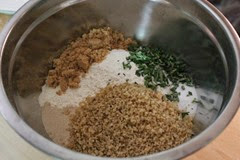 | 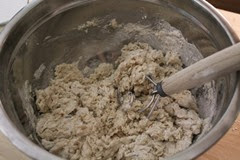 |
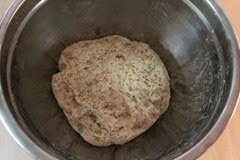 | 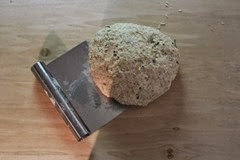 |
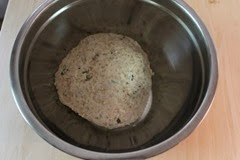 | 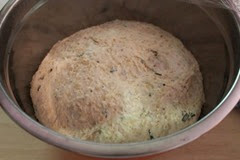 |
On Baking Day:
Remove the dough from the refrigerator about 2 hours before you plan to bake the rolls. Sprinkle a little flour on the work surface to keep the dough from sticking. Divide the dough into 12 (or 18) equal pieces and shape each piece into a round ball. Place the rolls on parchment-lined baking sheets.
Cover the pans loosely with plastic wrap or a kitchen towel and let the rolls rise at room temperature for 1 1/2 to 2 hours, or until increased to about 1 1/2 times their original size.
I used a roll stamper to add a unique imprint in the dough. However, the imprint sprung back so it just barely shows up on the baked rolls.
 | 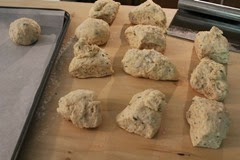 |
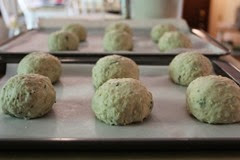 |  |
 | 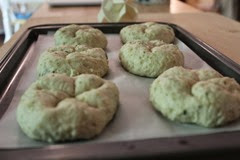 |
Preheat the oven to 350 degrees F. about 15 minutes before it’s time to bake. Slide the baking sheets into the oven on the middle and bottom racks and let the rolls bake for 10 to 15 minutes. Rotate the pans for even baking and let the rolls bake another 10 minutes until they have a rich golden color. The total bake time should be about 20 to 25 minutes.
Remove the rolls to a wire rack to cool. Brush with the melted butter (if desired) and allow the rolls to cool for at least 20 minutes (if you can).
I’ve been enjoying these rolls all week. I froze half of them and the rest I’ve been eating (one per day) for a snack. They taste great warm with butter. However, I’ve decided that adding some cheese to the dough would enhance them even further.
Thanks to Karen of Bake My Day for choosing this delicious and easy bread for our bake this month.
I’m also sharing these rolls with YEASTSPOTTING and BYOB!

Check out what the other creative Babes made this month:
The Bread Baking Babes (current dozen) are:
- Bake My Day - Karen
- blog from OUR kitchen - Elizabeth
- Bread Experience - Cathy
- Feeding my Enthusiasms - Pat/Elle
- girlichef - Heather
- Life's a Feast - Jamie
- Living in the Kitchen with Puppies - Natashya
- Lucullian Delights - Ilva
- My Diverse Kitchen - Aparna
- My Kitchen In Half Cups - Tanna
- Notitie Van Lien - Lien
- Thyme for Cooking - Katie (Bitchin’ Bread Baking Babe Bibliothécaire)
Would you like to be a Bread Baking Buddy? Just make the Wild Rice and Onion Bread (of course you may adapt) - and then send Karen your link (refer to the info in her announcement post). Submissions are due by May 29th. Once you've posted, you'll receive a Buddy badge for baking along.
I hope you will join us!
Happy Baking!
Cathy
